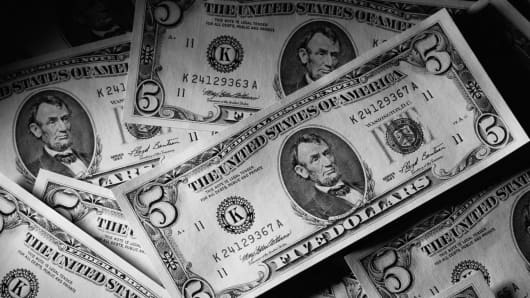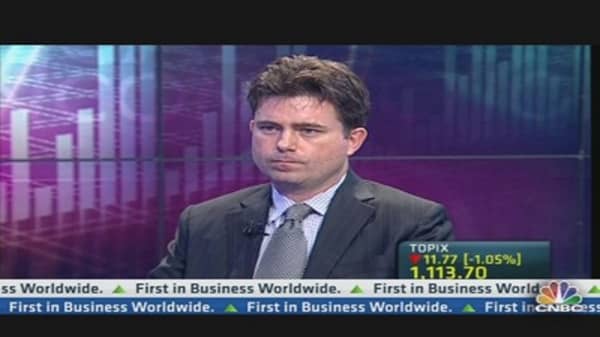The dollar last traded at 99.16 yen, down 0.8 percent. The greenback has weakened in five of the past six sessions versus the Japanese currency and traded below its 50-day moving average twice this week. Some analysts are convinced the Fed could start reducing its asset purchases at the end of the year, and the softer-than-forecast ADP number has not altered their view.
Dean Popplewell, chief currency strategist at forex broker OANDA in Toronto, noted that over the last 10 months the ADP number was below the U.S. payrolls figure eight times, missing estimates by about 37,000 jobs.
"There's a wide variance between the ADP number and the actual payrolls figure, so I don't think we would see changes in jobs forecasts for most banks," Popplewell said. "And I don't believe the ADP would change the Fed's tapering plan if that is in the works."
Earlier in the day, the yen gained traction after a pledge by Japanese Prime Minister Shinzo Abe to raise incomes disappointed markets due to a lack of detail. His comments weighed on Japanese shares. Stocks in Europe also fell.
(Read More: Why Japan Equities Sold Off on Abe's Plans)
Dollar/yen at 98.60 could provide important support, according to David Rodriguez, quantitative strategist at DailyFX in New York. "We'll nonetheless look for signs of potentially substantial market panic as a key reason to sell the dollar/yen, and indeed that remains our favorite trade in the week ahead," he said. "It feels like markets are on the verge of something huge."
The euro, meanwhile, last traded up 0.1 percent at $1.3091, not far from the session high above $1.31 reached after the U.S. private-sector jobs report.
Investors overall were wary before a European Central Bank decision on Thursday. The ECB is expected to leave interest rates unchanged, but weak data on euro zone services sector activity suggested an economic recovery was some way off and kept alive the chances of further easing.
The Australian dollar fell to its lowest in more than 1 1/2 years against the greenback as traders broke through an options barrier on the downside a day after the Reserve Bank of Australia left the door open for more easing. Traders said market participants broke through the barrier at US$0.9525. The low on the Aussie was posted at US$0.9509, its weakest level since October 2011.
The Aussie dollar last traded at US$0.9537, down 1.2 percent. On Tuesday, the RBA held rates steady at 2.75 percent but said it could ease again.




